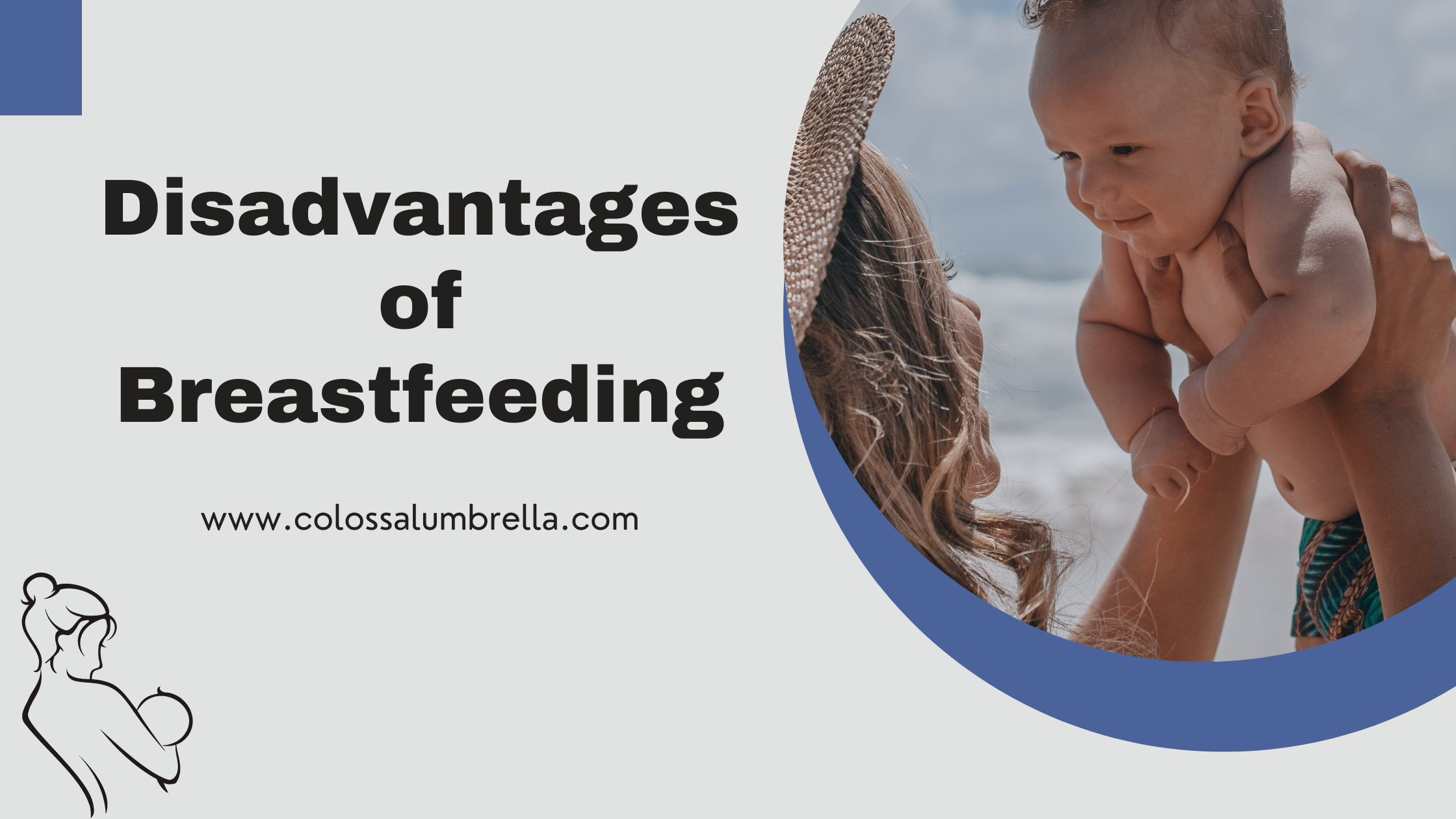Contents
Parenthood, ah, what a rollercoaster ride it is, right? From those heart-melting first giggles to the inevitable diaper disasters – every moment seems like a page torn from a wildly unpredictable adventure. Amidst the sweet chaos, there’s a chapter that often doesn’t get enough importance, the journey of breastfeeding. Behind those serene Instagram-worthy moments and the glowing reports, there’s a side to breastfeeding that isn’t always talked about.
This blog post dive into the candid conversation about the five disadvantages of breastfeeding that, trust me, we’re all nodding our heads in agreement about. We’re about to get real, relatable, and maybe even a tad bit rebellious as we unveil the less-than-glamorous aspects of breastfeeding.
5 Disadvantages of Breastfeeding
Breastfeeding has long been touted as the best source of nutrition for infants. It provides numerous benefits for both mother and baby, including essential nutrients, disease-fighting substances, and a strong emotional bond. However, it’s important to consider both the advantages and disadvantages when deciding whether to breastfeed. Here are potential drawbacks of breastfeeding, debunk common myths, and provide insights on how to overcome challenges.
Subscribe to my blog for Parenting tips that will make you feel like a pro, and get access to exclusive free Printables that will keep your little ones busy and happy!
Disadvantage 1: Breastfeeding Challenges and Pain
Breastfeeding is a natural and normal way to feed your baby, but it can come with its own set of challenges. While it is not inherently painful, some women may experience discomfort during the initial stages of breastfeeding. This can be attributed to improper latching or positioning. One of the major disadvantages of breastfeeding is emotional trauma one has to go through when not been able to feed. However, seeking support from a lactation consultant can help resolve these issues and ensure a pain-free breastfeeding experience. It’s important to remember that breastfeeding should not be painful if done correctly.
Disadvantage 2: Inconvenience and Public Perception
One perceived disadvantage of breastfeeding is the inconvenience it may pose, especially when it comes to feeding in public. While public acceptance of breastfeeding is improving, some women may still feel self-conscious or embarrassed about breastfeeding in public. However, it’s important to note that breastfeeding is protected by law in many countries, and mothers have the right to breastfeed wherever they choose. By normalizing breastfeeding and advocating for its acceptance, we can help create a more supportive environment for nursing mothers.
Disadvantage 3: Difficulty in Measuring Milk Intake
Unlike bottle feeding, it is not possible to measure exactly how much milk a baby is consuming while breastfeeding. This can lead to concerns about whether the baby is getting enough nourishment. However, there are several ways to gauge if your baby is adequately fed. Monitoring your baby’s weight gain, keeping track of wet and dirty diapers, and observing active feeding cues can all provide reassurance that your baby is receiving sufficient milk. Consulting with a healthcare professional can also help address any concerns regarding milk intake.
Disadvantage 4: Potential Impact on Partner Bonding
Some individuals worry that breastfeeding may limit the opportunity for their partner to bond with the baby. While breastfeeding is a unique experience between mother and child, there are numerous other ways for partners to engage and form connections with the baby. Skin-to-skin contact, bathing, playing, and involvement in other aspects of childcare can all contribute to bonding. It’s essential to communicate openly with your partner about their role and find ways for them to actively participate in nurturing and caring for the baby.
Disadvantage 5: Flexibility and Independence
Breastfeeding can require a significant time commitment and may limit a mother’s flexibility and independence. Unlike bottle feeding, which allows for others to take over feeding responsibilities, breastfeeding relies solely on the mother. This can make it challenging to be away from the baby for extended periods or engage in activities that require separation. However, with proper planning and support, it is possible to maintain a balance between breastfeeding and personal needs. Pumping and storing breast milk, as well as seeking alternative feeding options when necessary, can help provide flexibility and independence.

Conclusion
While breastfeeding offers numerous benefits for both mother and baby, it is important to be aware of the potential challenges and disadvantages. However, many of these perceived drawbacks can be addressed with proper support and information. Seeking guidance from lactation consultants, joining support groups, and fostering an environment that embraces breastfeeding can help overcome obstacles and create a positive breastfeeding experience. Ultimately, the decision to breastfeed should be based on individual circumstances, preferences, and the overall well-being of both mother and baby.
Disclaimer: The content of this blog is for informational purposes only and is not intended to be a substitute for professional medical advice, diagnosis, or treatment. Always seek the advice of your physician or other qualified healthcare providers with any questions you may have regarding a medical condition.
I would stay connected and keep you updated with parenting tips, pregnancy guides, creative ideas, easy crafts, and Free Printables. Subscribe to Colossalumbrella to get new ideas delivered to your inbox. Follow me on Facebook, Pinterest, Twitter, and Instagram.
